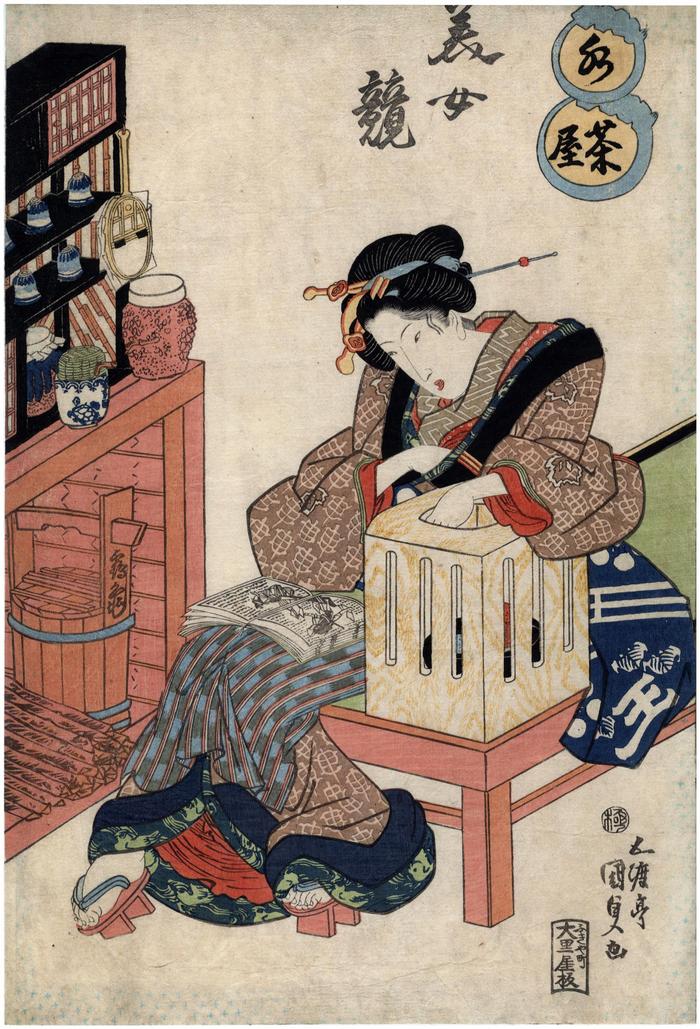Utagawa Kunisada (歌川国貞) / Toyokuni III (三代豊国) (artist 1786 – 01/12/1865)
Mizuchaya (水茶屋) teahouse from the series Contest of Beauties (Bijo kurabe - 美女競)
1823 – 1825
10 in x 14.25 in (Overall dimensions) Japanese color woodblock print
Signed: Gototei Kunisada ga
五渡亭国貞画
Publisher: Daikokuya
It reads: ふきや町 / 大黒屋板 (Marks U032 - seal 26-009)
Censor's seal: kiwame
Museum of Fine Arts, Boston
Ritsumeikan University
The British Museum - dated to the 1830s to 1840s The dictionary definition of mizuchaya is "(Edo-period) roadside teahouse where one would go to relax (in comparison with a restaurant style teahouse and teahouse offering sexual services); tea stall." This is not the specific name of an establishment, but a generic term. At the British Museum there is a Toyokuni I print of a beauty, the maid Okita, that their curatorial files describes as working for the Naniwaya, a mizu-chaya, on the grounds of the Asakusa Kannon Temple. This in no way implies that this print is of that same teahouse.
****
A fashionable young Edo woman is reading while warming her hands from the winter's cold.
Notice the water motifs in this print. She works at the 'water (水) teahouse'; her brown outer robe is decorated with stylized turtles, a symbol of longevity, as is the small blue and white ceramic on the ledge near her; her blue and white obi has stylized bats on it - another symbol of good fortune or happiness; and her green robe visible only near her feet shows ducks swimming.
****
The publisher's seal is a bit puzzling. There is only one other print by Kunisada which we have found with this seal. It is in the British Museum. It represents Benkei carrying the great bell of Mii. Both read as Fukiya-cho/Daikokuya han (ふきや町 / 大黒屋板). Both are signed 'Gototei Kunisada ga.' The Benkei print is 'guestimated' to date from the 1830s. Marks gives this publisher's dates as ca. 1820-37.
Not only is this seal a puzzler - and hence the publisher it goes with - but a search on the Internet at Google in both English and Japanese for either "ふきや町 / 大黒屋板" or "Fukiya-cho/Daikokuya han" yields only two results as of August 20, 2014 and both are the same print in the British Museum. To top that off, by clicking on the Daikokuya link at that site only one print shows up - the Kunisada Benkei. Generally the other prints ascribed to this publisher use a different seal.
beautiful woman picture (bijin-ga - 美人画) (genre)
Daikokuya (大黒屋) (publisher)
bats (komori - 蝙蝠) (genre)
